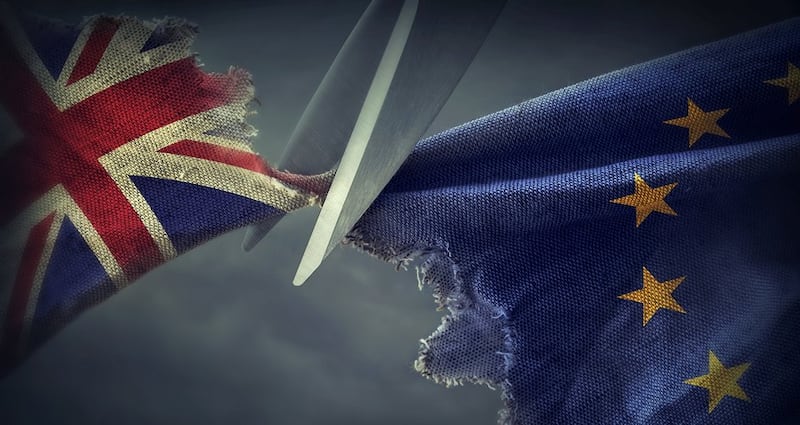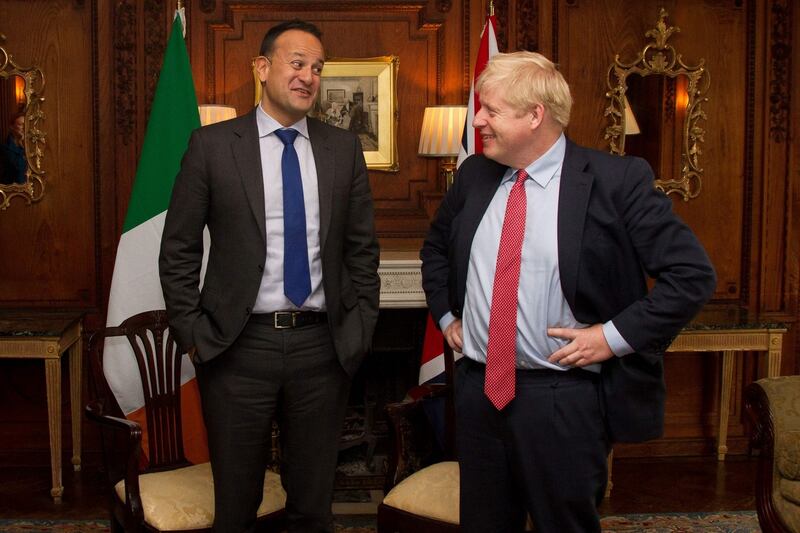On the day of the 1994 IRA ceasefire, Sinn Féin organised a victory parade along the Falls Road in Belfast. There was much public cynicism about this obvious spin but republicans still knew the importance of getting their cynicism in first.
Prior to the ceasefire, Sinn Féin and IRA leaders spent months discussing the political way ahead with their base, suffering damaging defections along the way.
There were four further years of grassroots briefings ahead of the Belfast Agreement, often to distinctly unimpressed audiences. To keep the show on the road, Sinn Féin is known to have given its supporters nudges and winks about the republican movement’s honesty and commitment to peace.

The task the DUP faces in reconciling its supporters to a Brexit deal is of the same order, whatever responsibility it accepts for it. I make the comparison to illustrate how such efforts are very much not in the party's character.
The DUP opposed the Belfast Agreement but did not make any attempt to present its defeat as victory. It slinked into Stormont and carped from the sidelines, still pretending it did not want to be there.
Last week the DUP held talks with loyalist leaders to reassure them on its Brexit proposals. These talks were notable for being unusual – the party was firefighting media reports of loyalist revolt rather than pursuing any long-term engagement.
Arm’s-length relationship
The DUP would deny loyalist paramilitaries are part of its base. It prefers to have an arm’s-length relationship with them and its approach to the broader unionist community is little better. Most DUP representatives are diligent glad-handers and constituency workers but the party has no equivalent of Sinn Féin’s constant campaigns and rounds of town hall meetings, where supporters are briefed on policy and strategy and invited to feel part of a movement.
There is a strange disconnection between the DUP and the unionist electorate that has only widened as its vote has grown. Religious, conservative and oddly classless, it is unlike huge swathes of the people it represents and seems disinterested in closing the gap. Internally, the DUP is a tiny black box of backroom operatives, as revealed by the Renewable Heat Incentive scandal. Elected representatives are kept on a tight leash and the membership, numbering about 1,000, is powerless and generally ignored.
This has created a culture where decisions are decreed from the top with no serious consultation inside the party, let alone beyond it. If a decision goes down badly, the leadership is more inclined to freeze and dig in than to explain itself and try again.
The DUP's main plan to present a Brexit deal as victory is to parade a large bag of money back to Northern <a class="search" href='javascript:window.parent.actionEventData({$contentId:"7.1213540", $action:"view", $target:"work"})' polopoly:contentid="7.1213540" polopoly:searchtag="tag_location">Ireland</a>
The best recent illustration was the February 2018 draft deal to restore devolution, reached with Sinn Féin. Negotiations were conducted by a DUP team of six, who did an excellent job by their own terms – Sinn Féin yielded on almost every point. However, nobody else in the DUP was kept informed, and nothing was done to prepare voters for the minor compromises involved. When the deal leaked days before completion, it caused shock among party representatives and complaints from the Orange Order.
The DUP immediately pulled the plug and has failed to lay any groundwork for resurrecting it since, although it knows the deal will have to be revisited if Stormont is to return.
Shocked
Brexit negotiations have been approached in the same fashion. A small team of senior DUP figures negotiate what they clearly believe to be the best outcome possible given the circumstances, notwithstanding previous opportunities wasted, but the outcome is still sprung on colleagues and supporters. Even those not surprised are still shocked.
Chief whip Jeffrey Donaldson had dropped hints to the media about a limited regulatory sea border but that was the extent of the forewarning of the shift in position on the backstop.
The DUP's main plan to present a Brexit deal as victory is to parade a large bag of money back to Northern Ireland. But as Sinn Féin knew 25 years ago, a parade without preparation risks becoming a farce.
There have been three years to engage with the public since the EU referendum and two years since the UK government first agreed to the backstop. The DUP could have spent that time bracing its voters for the inevitable compromise, owning the concept of special status and finessing the distinction between a sea border and a border administered beside the sea. Instead, it portrayed any unique treatment for Northern Ireland as the end of the union. There will be no slinking around this to carp from the sidelines – the DUP is at the heart of it, and always has been.
Centre-ground supporters of the backstop promoted it as the best of both worlds, a halfway house between the UK and the EU that could give Northern Ireland a long-term future. But it is barely plausible the DUP can get away with the cynicism of suddenly claiming to have saved the union by weakening it.











